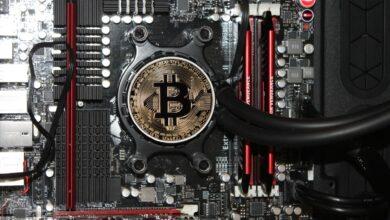Unmasking Crypto Mining – Myths vs. Reality

In the ever-evolving landscape of cryptocurrency, a plethora of myths and misconceptions surrounds the process of mining. This crucial component of the blockchain ecosystem often elicits confusion and skepticism among both newcomers and seasoned investors alike. As we delve into the intricacies of crypto mining, it becomes essential to engage in a thoughtful examination, dispelling fiction with facts, and clarifying the realities that underpin this fascinating domain.
Mining, at its core, is not merely about generating digital currency; it is a complex interplay of technology, economics, and cryptography. The misconceptions surrounding cryptocurrency mining can lead to misguided fears and unfounded criticisms, particularly regarding its environmental impact and its accessibility to ordinary users. By meticulously unpacking these narratives, we aim to provide clarity and understanding about what mining truly entails and how it functions within the broader cryptocurrency framework.
Through this exploration, we will address the various myths that have permeated discussions about mining–myths that often overshadow the genuine potential and transformative power of cryptocurrencies. By debunking these misconceptions, we hope to foster a more informed dialogue about the role of mining in today’s digital economy and beyond. In doing so, we celebrate not only the innovation that drives this industry but also the community that thrives on knowledge and transparency.
Cryptocurrency Mining Myths Debunked
Cryptocurrency mining has long been shrouded in a veil of misconceptions and myths that often cloud the understanding of its true nature. One prevalent myth is the idea that mining is solely reserved for tech-savvy individuals or large corporations with access to specialized hardware. In reality, while high-powered rigs can enhance efficiency, many users can participate in mining using consumer-grade equipment. This accessibility has democratized the process, allowing average individuals to engage in the crypto ecosystem without needing extensive technical knowledge or financial resources.
Another common misconception surrounding cryptocurrency mining is the belief that it is an inherently environmentally destructive activity. Critics often highlight the significant energy consumption associated with mining operations, particularly those utilizing proof-of-work mechanisms. However, this narrative neglects to consider the growing shift towards renewable energy sources within the mining community. Many miners are now establishing operations in regions rich in hydroelectric power or other sustainable energy options. By debunking this myth, we can see that the environmental impact of crypto mining is not only nuanced but also subject to positive change.
Furthermore, there is a persistent myth that mining guarantees substantial profits for all participants. While it is true that early adopters of cryptocurrencies may have reaped significant rewards from mining, the landscape has shifted dramatically. The competition has intensified, and several factors–such as electricity costs, hardware efficiency, and market fluctuations–can drastically affect profitability. By clarifying these facts, potential miners can make informed decisions, weighing their risks against potential rewards before committing to this venture.
The notion that cryptocurrency mining is illegal or linked exclusively to illicit activities is another misconception that warrants debunking. While it is true that some criminals have exploited cryptocurrencies for nefarious purposes, this does not reflect the entire industry. In fact, legitimate use cases abound, with many businesses and individuals harnessing the power of cryptocurrencies for transparent transactions and innovative solutions. Understanding this context helps to dispel fears and encourages a more balanced view of crypto mining’s role in society.
In addition to these myths, there exists a belief that all cryptocurrencies rely on mining as a mechanism for transaction validation and network security. While proof-of-work systems dominate certain cryptocurrencies like Bitcoin, numerous alternatives employ different consensus mechanisms such as proof-of-stake or delegated proof-of-stake. These methods not only reduce reliance on mining but also offer varying degrees of decentralization and energy efficiency. Thus, when discussing cryptocurrency mining, it is crucial to acknowledge the diversity within the ecosystem and recognize that not all cryptocurrencies share the same foundational principles.
In conclusion, debunking myths surrounding cryptocurrency mining requires a careful examination of facts and data rather than relying on sensationalistic narratives. By clarifying misconceptions about accessibility, environmental impact, profitability, legality, and network diversity, we can cultivate a more informative dialogue around cryptocurrency mining. As our understanding evolves, so too should our perceptions of this multifaceted industry–one that continues to shape the future of finance and technology in remarkable ways.
Myth 1: Mining is Only for Experts
In the evolving world of cryptocurrency, one pervasive myth that demands examination is the notion that mining is exclusively the domain of experts. This misconception often deters enthusiastic newcomers from participating in the crypto economy, leading to a skewed understanding of what mining truly entails. In reality, while a basic understanding of technology certainly helps, the barriers to entry have significantly diminished over recent years, making it increasingly accessible to the average person.
To clarify this myth, it is essential to understand what mining actually involves. At its core, cryptocurrency mining is the process of validating transactions on a blockchain network and adding them to the public ledger. This process requires computational power and energy but does not necessarily demand extensive technical expertise. Many user-friendly platforms and mining pools now exist, enabling individuals with minimal knowledge to engage in mining activities effectively. Thus, equating success in mining solely with expert-level skills is misleading.
Dispelling this myth further reveals that various tools and resources are available to assist novice miners. For instance, many online communities offer tutorials, forums, and comprehensive guides that demystify the technical aspects of mining. Moreover, advancements in hardware have produced mining rigs that are designed for ease of use, allowing users to set up operations with relative simplicity. Consequently, while specialized knowledge can enhance one’s ability to mine successfully, it is not a prerequisite for participation.
Additionally, the rise of cloud mining services has transformed the landscape even more profoundly. These services enable individuals to rent computing power from remote data centers rather than investing in expensive hardware. As such, even those lacking technical know-how can engage in cryptocurrency mining without direct involvement in the intricate processes typically associated with it. This shift has democratized access to mining opportunities, further debunking the myth that only experts can participate.
It is also worth noting that the cryptocurrency community values inclusivity and collaboration. Many experienced miners are more than willing to share their insights and strategies with newcomers, fostering an environment where learning and growth are encouraged. This culture of mentorship serves as a counterbalance to the prevailing perception that expertise is a requisite for success in mining.
In conclusion, while some foundational knowledge undoubtedly enhances one’s experience in cryptocurrency mining, it is a misconception to believe that only experts can thrive in this arena. The evolution of technology and community support has opened doors for many aspiring miners. As we continue to debunk myths surrounding cryptocurrency and clarify misconceptions about mining, it becomes increasingly evident that anyone with a willingness to learn can embark on this exciting journey into the world of crypto.
Myth 2: Mining is Always Profitable
The notion that cryptocurrency mining is invariably profitable is one of the most pervasive myths surrounding this complex domain. In reality, the profitability of mining depends on a multitude of factors that must be carefully considered. From the price of the specific cryptocurrency being mined to the costs associated with electricity and hardware, each element plays a crucial role in determining whether an operation will yield any financial gain. The volatile nature of cryptocurrency prices can dramatically affect profitability; for instance, a spike in Bitcoin’s value may seem to promise riches, but an equally sudden downturn can wipe out gains accrued over time.
Additionally, the rising difficulty levels in mining certain cryptocurrencies further complicate the narrative around profitability. As more miners join the network, the computational power required to solve blocks increases, resulting in diminishing returns for individual miners. This phenomenon has been particularly evident in Bitcoin mining, where only those with access to advanced technology and inexpensive electricity can hope to maintain a profitable operation. Thus, the myth that mining is always a lucrative venture requires clarification through an understanding of these underlying dynamics.
Moreover, it is essential to consider the initial investment required for mining equipment. High-performance rigs capable of competing in today’s mining landscape come with significant upfront costs. When these expenses are coupled with ongoing operational costs such as cooling systems and maintenance, one quickly realizes that profitability is not guaranteed but rather contingent on a calculated risk assessment. Debunking this myth involves recognizing that many new entrants into the market underestimate these factors, leading them to believe that they can easily turn a profit without adequate preparation or knowledge.
In conclusion, while there are those who have successfully navigated the complexities of cryptocurrency mining to achieve financial success, it is critical to dispel the myth that such outcomes are universal or inevitable. Facts show that profitability hinges on a confluence of variables that include market conditions, technological capabilities, and strategic planning. As we continue to explore and clarify the realities surrounding crypto mining, it becomes clear that informed decision-making is paramount for anyone considering this endeavor.
Myth 3: Mining Harms Your Hardware
In the vibrant and often tumultuous world of cryptocurrency, a plethora of myths and misconceptions swirl around like leaves caught in a gale. One such myth that deserves our scrutiny is the belief that mining irreparably damages your hardware. This assumption, while widespread, is as unfounded as many other misinterpretations surrounding crypto. The act of mining, when approached with knowledge and understanding, does not equate to an inevitable demise of your precious machines.
At the heart of this misconception lies a fundamental misunderstanding of both the technology involved and the operational parameters that govern successful mining endeavors. It is crucial to differentiate between poor practices–such as inadequate cooling and substandard equipment usage–and responsible mining strategies that prioritize hardware longevity. Just as an athlete maintains their body through proper training and nutrition, so too can miners protect their equipment through conscientious operational choices.
Dispelling the Myths: Facts vs. Fiction
The narrative surrounding the potential harm to hardware during cryptocurrency mining is riddled with exaggerations and misinterpretations. In reality, many miners have found ways to optimize their setups without succumbing to the pitfalls of overheating or excessive wear and tear. By implementing effective cooling solutions, regularly updating software, and investing in quality components, miners can enjoy the fruits of their labor without sacrificing their hardware’s integrity.
- Cooling Solutions: Utilizing advanced cooling systems can significantly reduce heat buildup.
- Quality Components: Investing in reliable parts can enhance both performance and durability.
- Regular Maintenance: Keeping hardware clean and updated is essential for longevity.
As we continue our journey through the labyrinth of cryptocurrency mining, it becomes increasingly clear that understanding the facts is paramount. Debunking these myths surrounding mining not only fosters a more informed community but also encourages responsible practices that benefit both miners and their hardware alike. Embracing knowledge over fear empowers individuals to engage in cryptocurrency mining with confidence and clarity.
In conclusion, let us approach the world of crypto with a discerning eye, armed with facts rather than fables. By dispelling misconceptions about mining’s impact on hardware, we pave the way for a healthier crypto ecosystem–one built on informed decisions and sustainable practices. As we untangle these myths one by one, we not only elevate our collective understanding but also celebrate the remarkable potential that cryptocurrency holds for innovation and economic empowerment.





